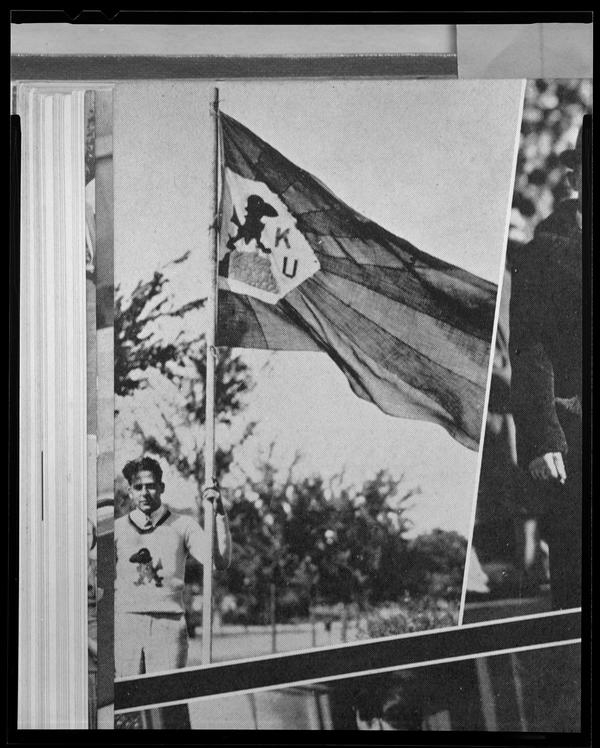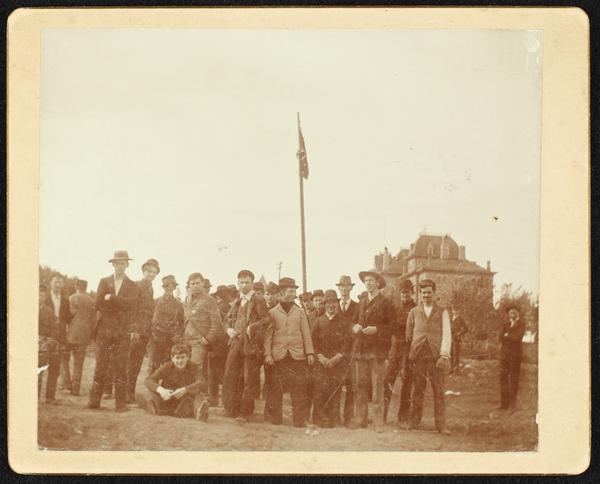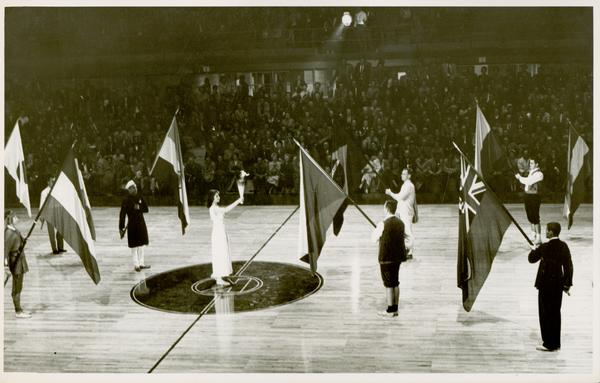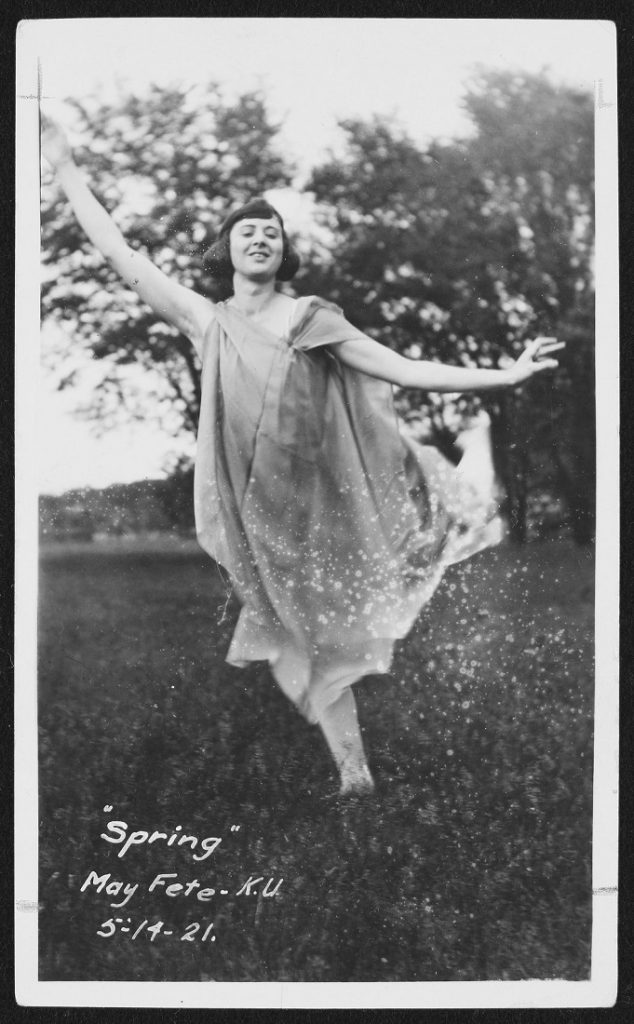Each week we’ll be posting a photograph from University Archives that shows a scene from KU’s past. We’ve also scanned more than 5,000 images from KU’s University Archives and made them available online; be sure to check them out!
Since ancient times, the first day of May (May Day) has been marked in the northern hemisphere with spring festivals and celebrations. However, if you were a male underclassman at KU between 1891 and 1904, chances are you would have marked the day by participating in a large public brawl – the May Day or Maypole Scrap – with your fellow classmates.
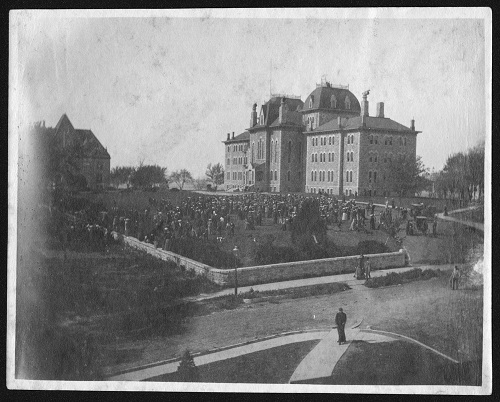
Group gathered for the May Day Scrap, 1903.
Old Fraser Hall is seen on the right, with Old Blake in the background on the left.
University Archives Photos. Call Number: RG 71/10 1903: Student Activities: May Day (Photos).
Click image to enlarge (redirect to Spencer’s digital collections).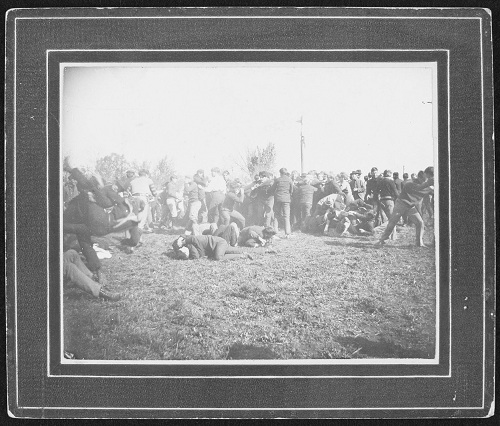
The last May Day Scrap, 1904. Note the maypole in the background.
University Archives Photos. Call Number: RG 71/10 1904: Student Activities: May Day (Photos).
Click image to enlarge (redirect to Spencer’s digital collections).
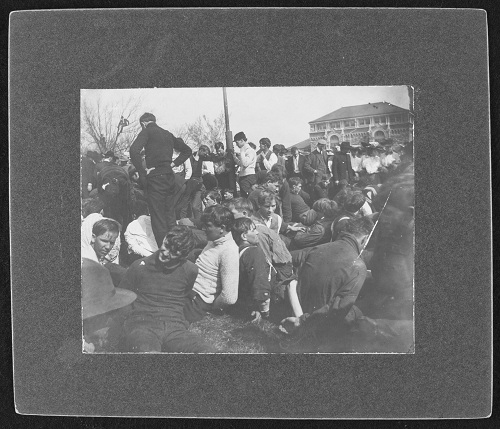
Students – some seated and bound – at the May Day Scrap, 1904. Taking prisoners was a
feature of the event: “captives were tied and bound with whatever materials happened to be at hand:
rope, wire, even chains. Sometimes the prisoners were thrown into a hedge or rolled down a hill;
once they were even padlocked in a room in a Lawrence house.”
University Archives Photos. Call Number: RG 71/10 1904: Student Activities: May Day (Photos).
Click image to enlarge (redirect to Spencer’s digital collections).
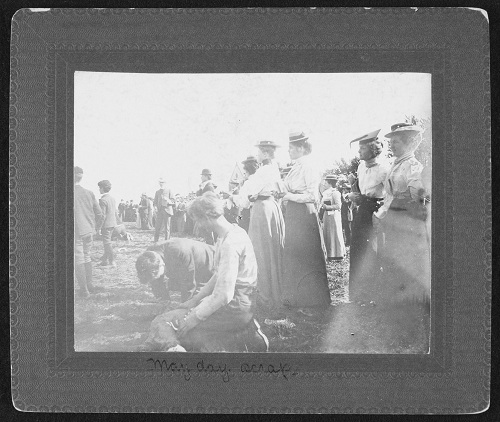
Spectators at the May Day Scrap, 1904. Although female students generally
kept to the sidelines during the skirmish, they also sometimes
aided their classmates. University Archives Photos.
Call Number: RG 71/10 1904: Student Activities: May Day (Photos).
Click image to enlarge (redirect to Spencer’s digital collections).
Scholar Henry J. Fortunato from KU’s Department of History describes the event this way in his article “Mayday Mayhem”:
In its early days, the Maypole Scrap regularly pitted alliances of sophomores and seniors or law students against a force of juniors and freshmen. Over time as it evolved into a KU tradition, the fighting was usually limited to freshmen and sophomores.
Typically, preparations for a confrontation began shortly after midnight on May 1 when a group of freshmen would assemble in the vicinity of present-day Fraser Hall and erect a tall maypole flying their class flag. They anchored the pole securely and often coated it with concoctions that might include such ingredients as tar, turpentine, lamp black, molasses, axle grease and barbed wire.
By morning, a mob of freshmen milling around the pole would taunt all passersby – students as well as professors – into tipping their hats as a sign of respect. Those who refused had to outrun their tormentors. If captured, these recalcitrant individuals were threatened with having their faces pressed into the grimy mixture on the maypole unless they made the appropriate obeisance. It was an offer that most chose not to refuse.
The real action began when the sophomores launched their attack. Their goal was to scatter the defending freshmen and pull down the maypole, generally within a set period of time. The resulting fray was usually a matter of pushing, shoving, tackling, and charging, but over the years, sophomore classes experimented with other more novel tactics.
More pictures of the May Day Scrap are available via Spencer’s digital collections.
Caitlin Donnelly
Head of Public Services
Melissa Kleinschmidt, Megan Sims, and Abbey Ulrich
Public Services Student Assistants

